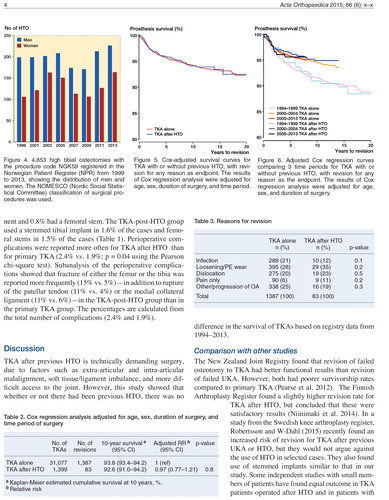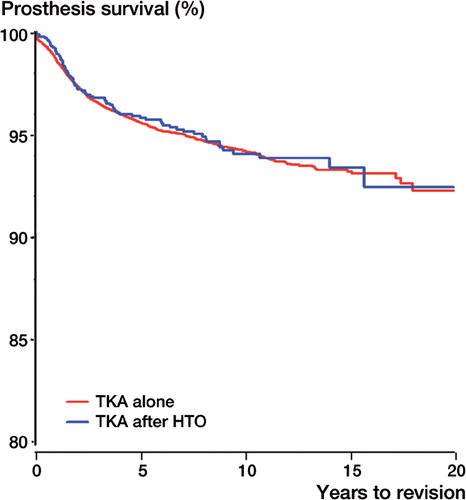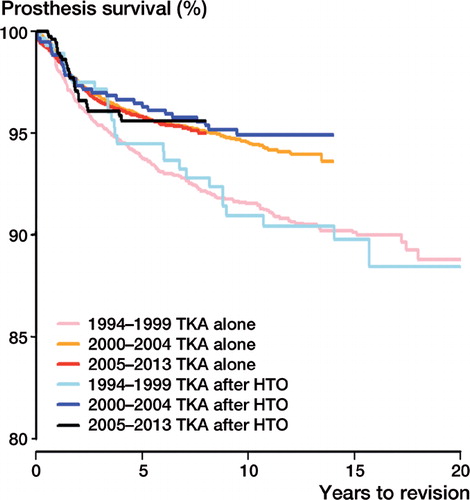Figures & data
Figure 1. Example of extra-articular malalignment after high tibial osteotomy (HTO) with opening wedge technique. The red line on the left radiograph (a) indicates the mechanical axis lateral to the knee joint. The radiograph to the right (b) indicates the extra-articular angulation of the tibia in the osteotomy area.
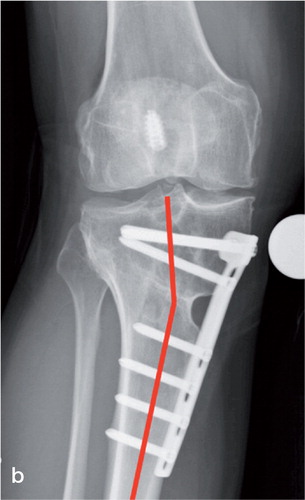
Figure 2. Example of intra-articular malalignment after high tibial osteotomy (WTO) with closing wedge technique. The solid red line indicates that the tibial plateau has been elevated medially and is not perpendicular to the tibial axis.
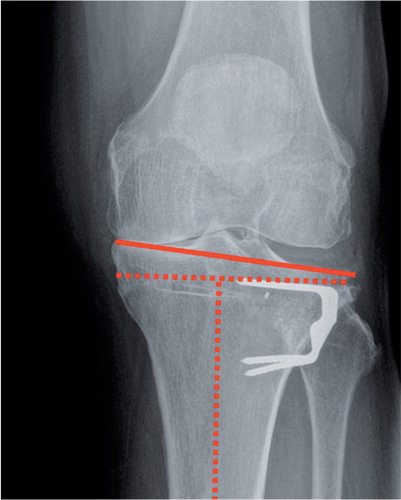
Figure 3. 31,077 primary total knee arthroplasties and 1,399 total knee arthroplasties after previous high tibial osteotomy (HTO) were selected for inclusion in the study. Total knee arthroplasties with a patellar component, uncemented total knee arthroplasty, knees treated with unicompartmental or revision implants, and uncommon implant brands were excluded.
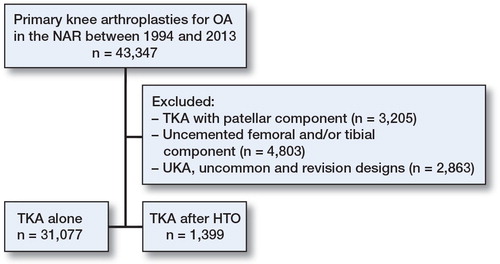
Table 1. Patient and procedure characteristics for TKA with and without previous HTO from 1994 to 2013 with the diagnosis osteoarthritis
Table 3. Reasons for revision
Table 2. Cox regression analysis adjusted for age, sex, duration of surgery, and time period of surgery
Figure 4. 4,853 high tibial osteotomies with the procedure code NGK59 registered in the Norwegian Patient Register (NPR) from 1999 to 2013, showing the distribution of men and women. The NOMESCO (Nordic Social Statistical Committee) classification of surgical procedures was used.
